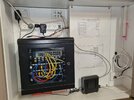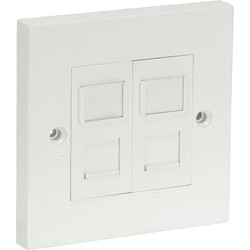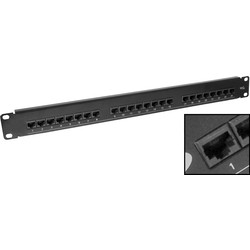With the number of Cat X cables you are considering I believe that you
are going to require a "Patchpanel" at some central point.
Here is an example of one, installed in a "cupboard" in the garage of a two bedroom home.
It contains 3 Rows of 12 Jacks,
1 Row with 10 individual Jacks.
a LAN
(Local Area Network) Switch, with 16 Ports
plus a "Shelf" at the top - for storing the "records" relating to the connections and "patches".

It is lockable, so that the "patches" can't be "amended" by anyone who does not have access to the key.!
The Six Gang "switch plate" at the top of the cupboard space has Six 6P6C Jacks, which are connected to Jacks in the Patchpanel cabinet below.
At the Right is the "Cable" connection equipment (NBN here)
and the signals to/from it are fed through one of those six Jacks,
into the Patchboard
and onto the "Office",
where the Modem and Wi-Fi are located.
The LAN signals from the Modem/Router are fed
back to the Patchpanel,
to the LAN Switch (at the Top of the cabinet)
from which they are fed to the LAN outlets throughout the house,
via Cat 6 cables.
The "Landline" Telephone cable (derived from the Modem) is also fed back to the Patchpanel and distributed to several points throughout the house, also via Cat 6 cables and 6P6C jacks.
HDMI TV signals (converted to be sent via LAN Cables) are also "Patched" through here from the TV room
(where the Recording equipment and DVD/Blu-Ray players are located)
to another TV in the Family room.





